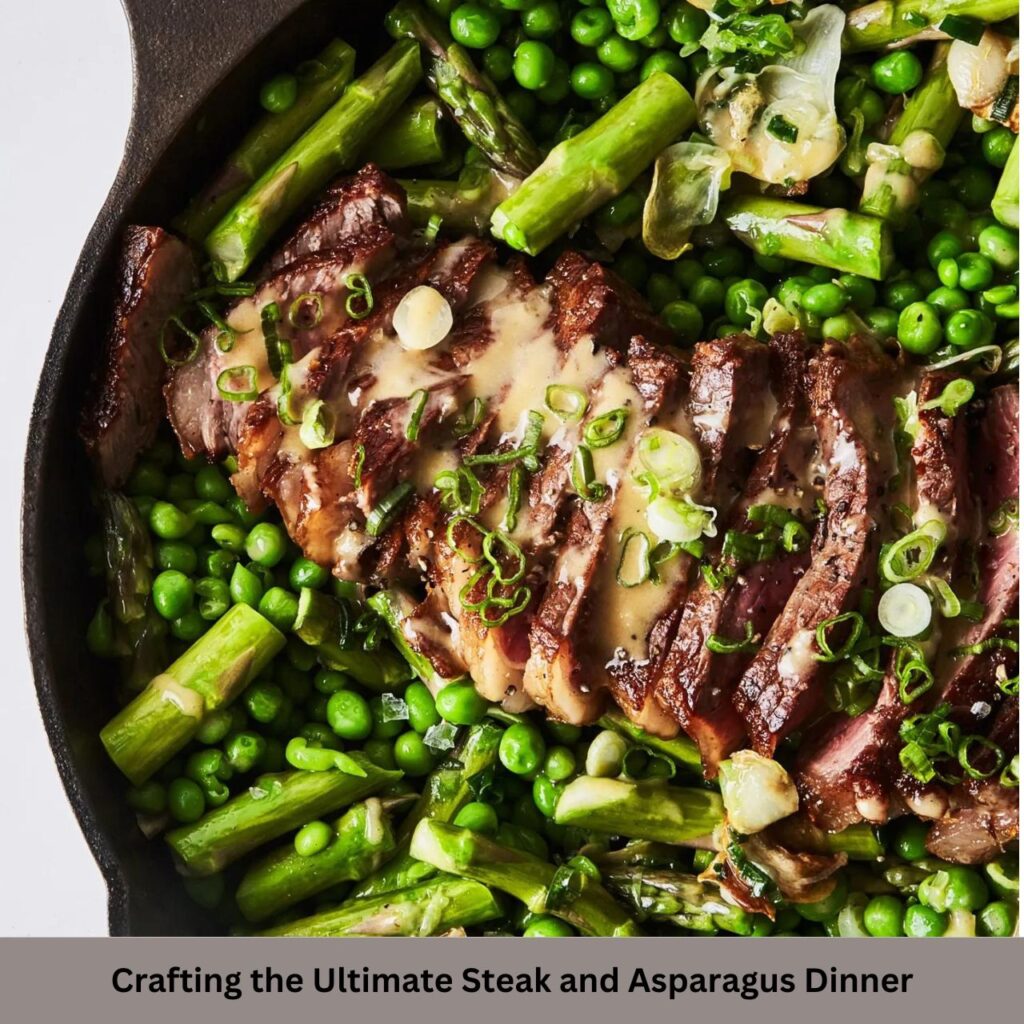Healthy fresh meals aren’t just about fueling the body; they can be a feast for the senses. Contrary to popular belief, eating healthy doesn’t mean sacrificing flavor. When done right, fresh meals can offer an explosion of taste that delights the palate while nourishing the body. The vibrancy of fresh produce, the delicate nuance of herbs, and the satisfying richness of healthy fats combine to create meals that are anything but boring.
The key to creating amazing-tasting healthy meals lies in the quality of ingredients and the way they’re prepared. Fresh ingredients, sourced at the peak of their flavor, pack a punch that processed foods can’t compete with. With the right approach, every bite can be a symphony of textures, tastes, and aromas that make healthy eating an indulgent experience.
Debunking the Myth: Healthy Meals Are Bland

The idea that healthy meals are inherently bland is a long-standing myth. Often, people associate “healthy” with “diet” and envision a plate of plain, steamed vegetables or boiled chicken. But healthy meals are not synonymous with flavorlessness. This misconception arises because of poor preparation techniques and the over-reliance on processed convenience foods.
You open up a world of flavors when you embrace fresh, high-quality ingredients and elevate them with proper seasoning and cooking techniques. Fresh herbs, spices, and natural marinades can turn even the simplest ingredients into a delectable dish. The blandness myth is shattered when you explore the possibilities that healthy fresh meals offer, proving that wholesome food can be exciting.
The Power of Fresh Ingredients in Flavor
Fresh ingredients hold an innate power when it comes to flavor. Unlike their processed or canned counterparts, fresh ingredients retain their natural essence, capturing the earthiness of vegetables, the sweetness of ripe fruit, and the umami of fresh seafood or proteins. This unadulterated purity is key to creating meals that burst with flavor.
The vibrancy of fresh ingredients also means they require less manipulation to taste good. Minimal seasoning is often enough to enhance their natural qualities. Whether it’s a tomato picked at peak ripeness or a crisp, freshly harvested cucumber, fresh ingredients provide a clean, robust taste that’s hard to replicate with processed alternatives.
How to Select the Best Fresh Ingredients for Meals?
Choosing the best fresh ingredients is the first step in crafting a meal that tastes amazing. Freshness isn’t just about the time since harvesting; it’s about selecting produce at its peak. Local, in-season vegetables and fruits tend to be more flavorful than their out-of-season counterparts, which are often picked early and shipped long distances. Visit farmers’ markets, where produce is often fresher and more flavorful.
When selecting ingredients, rely on your senses. Look for vibrant colors, feel for firm textures, and smell for fragrant aromas. For proteins like meat or fish, opt for cuts that are firm and free from strong, off-putting smells. Fresh herbs should be bright, without wilting or browning. These seemingly small details add up, resulting in meals that burst with vitality and flavor.
Exploring Flavor Profiles In Healthy Cooking

Healthy cooking is the art of balancing flavor profiles—sweet, salty, sour, bitter, and umami. Each flavor plays a role in creating a well-rounded dish. Mastering these profiles allows you to create meals that are not only nourishing but also captivating to the taste buds. The interplay of these flavors can elevate simple ingredients to new heights.
For example, pairing sweet roasted carrots with a tangy citrus dressing or balancing the bitterness of arugula with the richness of avocado creates an exciting contrast. Understanding how to combine these profiles thoughtfully is key to avoiding monotony in your meals and unlocking the true potential of healthy, fresh ingredients.
The Role of Herbs and Spices in Enhancing Taste
Herbs and spices are the backbone of flavorful cooking. These aromatic powerhouses can transform a dish, adding complexity and depth without extra calories. Fresh herbs like basil, cilantro, or mint bring bright, sharp notes, while dried spices like cumin, coriander, or paprika lend warmth and richness. Using a combination of the two can amplify flavors and create an unforgettable culinary experience.
Beyond flavor, herbs and spices have health benefits. Turmeric, for instance, adds a vibrant golden hue and carries anti-inflammatory properties. Similarly, fresh ginger provides a zesty kick while aiding digestion. By learning to use herbs and spices effectively, you can enhance the taste of your meals while boosting their nutritional value.
Secrets to Balancing Sweet, Salty, Sour, and Bitter
Achieving the perfect balance between sweet, salty, sour, and bitter flavors is the key to crafting dishes that captivate the palate. Each of these elements serves a unique role in the flavor equation. Sweetness can come from natural sources like honey or ripe fruits, while salt enhances the other flavors, preventing the dish from tasting flat. Sour elements, such as lemon juice or vinegar, add brightness, while bitterness from greens or certain spices provides complexity.
To balance these flavors, start small. Add a pinch of salt or a splash of acidity at a time, tasting as you go. The goal is to create harmony, where no single flavor overpowers the others, allowing all the ingredients to shine. This delicate interplay is what makes healthy fresh meals not just nutritious but also truly satisfying.
Healthy Fats That Add Richness to Fresh Meals
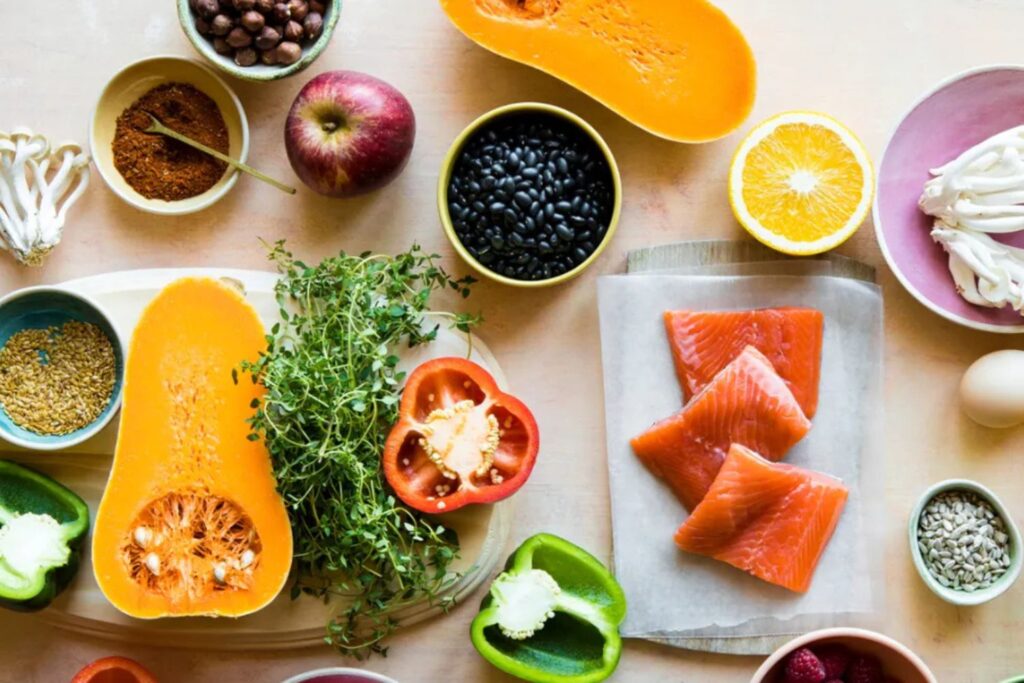
Fats are essential to making fresh meals taste satisfying and luxurious. Ingredients like avocado, olive oil, nuts, and seeds offer a rich, creamy texture that enhances the overall eating experience. These fats don’t just add richness—they also carry flavor, making every bite more enjoyable.
Additionally, healthy fats play a vital role in absorbing fat-soluble vitamins like A, D, E, and K from your vegetables. They help you feel fuller for longer and can even make simple dishes, like salads or roasted vegetables, feel more indulgent. Incorporating them into your meals strategically allows for maximum flavor without compromising on health.
The Importance of Texture in Creating Delicious Meals
The texture is an often-overlooked component of creating delicious meals. A meal with a variety of textures—crunchy, creamy, chewy, or tender—keeps each bite interesting. The crunch of fresh greens paired with the creaminess of a dressing, or the soft chew of grains against the crispness of roasted vegetables, creates a dynamic eating experience that satisfies not just the taste buds but also the senses.
When designing a healthy meal, think about how the textures work together. Roasted nuts or seeds can add crunch to a salad, while a smooth hummus or yogurt can add creaminess to complement raw vegetables. Mixing and matching textures makes a meal far more enjoyable and leaves you feeling more satiated.
How to Use Acidity for Flavor Depth in Meals?
Acidity is a secret weapon in cooking that brightens flavors and adds depth to a dish. It cuts through richness and enhances the natural sweetness of vegetables or fruits. Ingredients like lemon juice, vinegar, or even fermented foods like pickles provide that necessary tang that brings a dish to life. Without acidity, a meal can taste flat or overly heavy.
Incorporating acidity can be as simple as a squeeze of lemon over roasted vegetables or a splash of balsamic vinegar in a salad dressing. Acidity balances other flavors and adds complexity, making your healthy fresh meals taste more dynamic and flavorful with minimal effort.
Combining Fresh Vegetables For Vibrant, Tasty Dishes
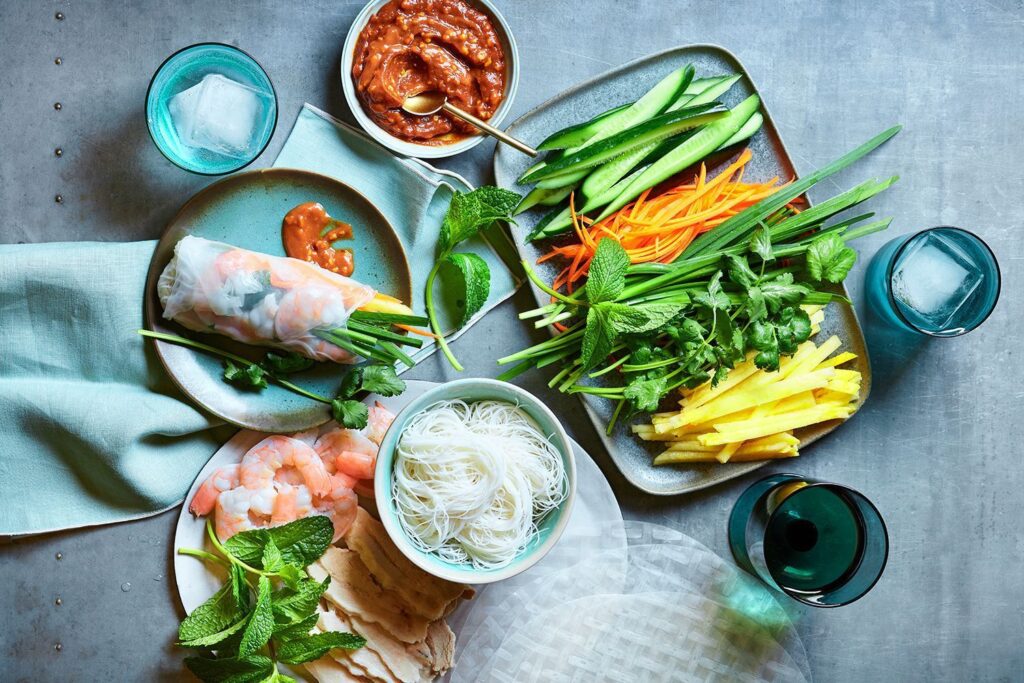
Fresh vegetables are the cornerstone of any healthy meal. When combined thoughtfully, they create vibrant, tasty dishes that are visually appealing and full of flavor. The key is to use a variety of colors and textures—each color often represents different nutrients and flavors. Pairing earthy beets with peppery arugula or sweet bell peppers with crisp cucumbers adds layers of taste and nutrition to your meals.
Experiment with both raw and cooked vegetables. A salad of raw kale, thinly sliced radishes, and roasted sweet potatoes, for instance, offers a satisfying blend of crunch and softness. Cooking methods such as roasting or grilling can caramelize the natural sugars in vegetables, intensifying their sweetness and creating a dish that is both healthy and indulgent.
Making Whole Grains Exciting and Flavorful
Whole grains, often seen as boring or bland, can be transformed into exciting and flavorful components of your meal. Farro, quinoa, bulgur, and barley all offer distinct textures and flavors that pair well with a variety of fresh ingredients. Toasting grains before cooking can enhance their nuttiness while cooking them in broth or infusing them with herbs can add depth.
Once cooked, grains can serve as a base for salads, bowls, or side dishes. Tossing them with fresh vegetables, a zesty dressing, and a sprinkle of herbs transforms them into something far from ordinary. The chewiness of grains contrasts well with the crispness of vegetables, creating a meal that is both satisfying and nutrient-dense.
How Fresh Proteins Elevate the Taste of Meals?
Fresh proteins like fish, poultry, and legumes are fundamental to creating meals that are both satisfying and delicious. Freshness is key when it comes to proteins, as it significantly impacts flavor and texture. For example, freshly caught fish has a sweetness and delicate texture that is unmatched by frozen varieties. Similarly, fresh chicken or turkey can retain more moisture, resulting in a juicier, more flavorful dish.
Beyond animal proteins, plant-based options like beans, lentils, and tofu can also shine when fresh. Proper seasoning and cooking techniques elevate these proteins, making them just as delicious as their meat-based counterparts. Whether grilled, roasted, or sautéed, fresh proteins add substance to your meal while complementing the flavors of fresh vegetables and grains.
The Art of Creating Healthy Sauces That Burst With Flavor
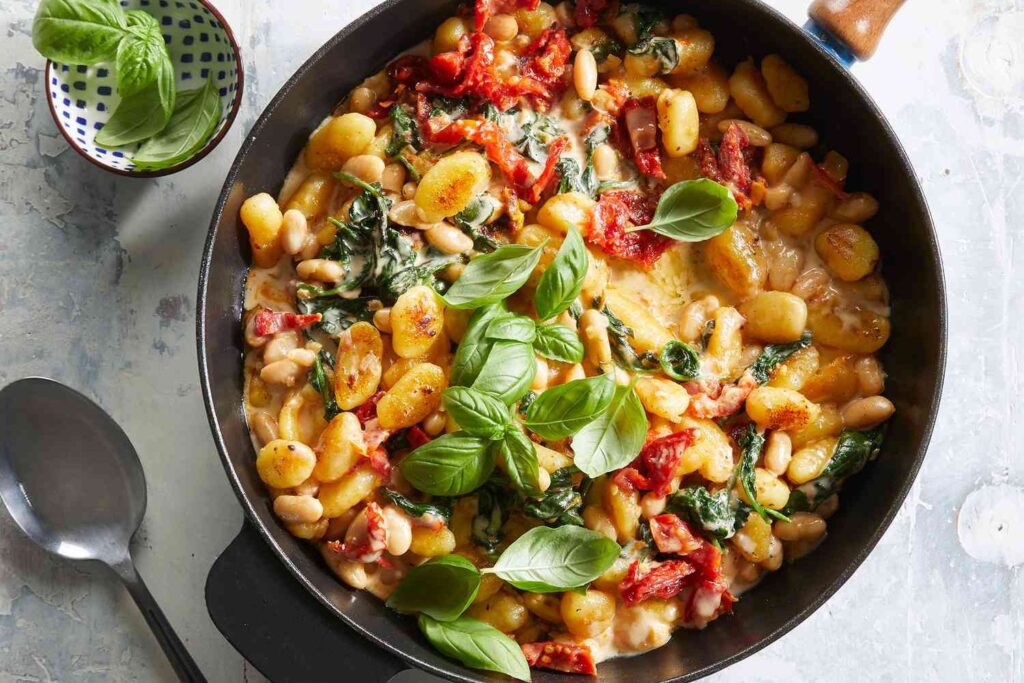
A great sauce can be the difference between a mediocre meal and one that bursts with flavor. The key to making a healthy sauce is using fresh ingredients and balancing flavors. A homemade tomato sauce made from ripe tomatoes, garlic, and fresh basil can be light yet incredibly flavorful. Similarly, a yogurt-based dressing with fresh herbs, lemon juice, and olive oil can add creaminess and zest without unnecessary calories.
Healthy sauces don’t rely on excessive fats or sugars to taste good. Instead, they use high-quality, fresh ingredients to pack a punch. A well-made sauce can elevate simple proteins and vegetables, turning them into a cohesive and delightful dish that excites the palate.
Simple Marinades that Transform Healthy Ingredients
Marinades are a simple yet powerful way to infuse flavor into healthy ingredients. A good marinade can take chicken, tofu, or vegetables from bland to delicious with minimal effort. Fresh herbs, citrus, vinegar, and a dash of healthy fats like olive oil can create a marinade that imparts both flavor and tenderness.
Marinating for as little as 30 minutes can make a significant difference, but allowing ingredients to soak overnight amplifies the flavors even more. The acid in a marinade helps to break down proteins slightly, making them more tender, while the fat carries flavors deeper into the ingredients. Marinades not only enhance taste but also ensure that your healthy fresh meals are never dull.
Cooking Methods That Bring Out the Best Flavor
The cooking method you choose can greatly influence the flavor of your meal. While steaming and boiling preserve nutrients, roasting, grilling, and sautéing can bring out the natural sugars in vegetables and proteins, creating a richer, more complex flavor profile. Roasting vegetables at high temperatures caramelizes their sugars, giving them a sweet, toasty flavor that is hard to achieve with other methods.
Grilling imparts a smoky depth, especially to proteins and heartier vegetables like zucchini or peppers. Sautéing in a small amount of healthy fat like olive oil can enhance the flavors of garlic, onions, and herbs, creating a fragrant base for any meal. Each method brings something unique to the table, allowing you to explore different ways to make healthy fresh meals even more delicious.
Using Seasonal Ingredients For Peak Freshness And Taste

Seasonal ingredients not only taste better but also contain more nutrients than out-of-season produce. When fruits and vegetables are in season, they are harvested at their peak, ensuring maximum flavor and nutrition. A juicy summer tomato or crisp fall apple will always outshine its off-season counterpart in both taste and texture.
Incorporating seasonal ingredients into your meals adds variety throughout the year and keeps your dishes exciting. Seasonal eating also encourages a closer connection to local farms and markets, where you can find produce that hasn’t traveled long distances, ensuring it’s as fresh as possible. By aligning your meals with the seasons, you ensure your dishes are as flavorful as they are healthy.
How to Avoid Common Mistakes that Make Healthy Meals Taste Dull?
One of the most common mistakes in healthy cooking is under-seasoning. Fear of using salt or fat can lead to bland dishes. However, using a moderate amount of salt, healthy fats, and herbs can enhance natural flavors without compromising health. Another mistake is overcooking vegetables, which can result in a mushy texture and loss of vibrant flavors.
Additionally, relying too heavily on raw ingredients without incorporating different textures and cooking techniques can make meals feel monotonous. The key to avoiding dull meals is embracing variety—in ingredients, seasonings, and cooking methods. With a little attention to detail, even the simplest healthy fresh meals can be full of life and flavor.
Creating Flavorful Dressings for Fresh Salads
A well-crafted dressing can elevate even the most basic salad into a delicious, satisfying meal. Homemade dressings, made with fresh herbs, tangy vinegar, and healthy oils, offer a burst of flavor without the unnecessary additives often found in store-bought options. A vinaigrette made from lemon juice, olive oil, Dijon mustard, and a sprinkle of fresh herbs can transform leafy greens into a bright and refreshing dish.
Experiment with different flavor combinations, such as a creamy avocado dressing or a spicy tahini sauce. The right dressing not only complements the vegetables but also brings the entire salad together, ensuring every bite is as flavorful as the last. Fresh dressings are the key to keeping salads exciting and delicious.
Healthy Snacks That Are Both Fresh And Delicious
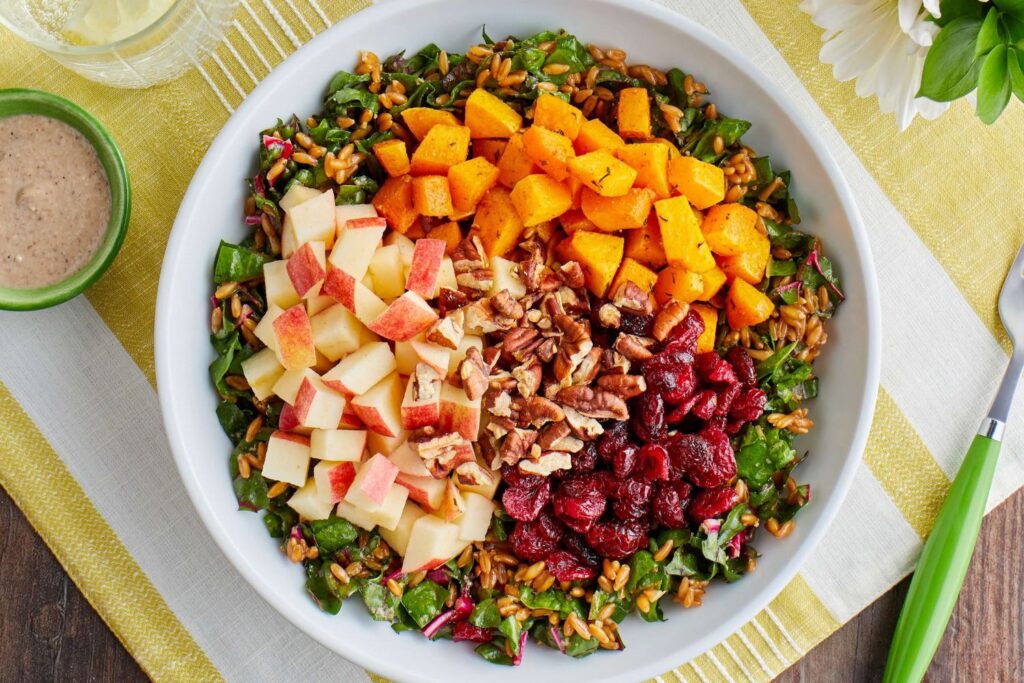
Snacking can be a challenge when trying to stay healthy, but fresh, delicious options are easy to create. Fresh fruit paired with a handful of nuts, vegetable sticks with hummus, or a yogurt parfait with berries and seeds are all simple yet satisfying snacks. These options not only curb hunger but also provide essential nutrients.
For a more savory option, consider slicing cucumber, bell peppers, and carrots and pairing them with a tangy, homemade dip. Fresh snacks are light yet satisfying, keeping energy levels stable without resorting to processed options. By focusing on fresh ingredients, snacking becomes a pleasure, not a guilty indulgence.
How to Create Delicious Plant-Based Fresh Meals?
Plant-based meals don’t have to be bland. When using fresh ingredients, plant-based cooking can offer an array of flavors and textures that are both hearty and delicious. Start with a base of whole grains, add a variety of colorful vegetables, and top it off with a flavorful sauce or dressing. Roasting or grilling vegetables brings out their natural sweetness while adding nuts or seeds provides a satisfying crunch.
Legumes, tofu, and tempeh are excellent sources of plant-based protein and can be seasoned or marinated to create savory, satisfying dishes. Plant-based meals are versatile and can easily adapt to different cuisines, whether it’s a Mediterranean-inspired grain bowl or a spicy curry. With the right ingredients and a bit of creativity, plant-based meals can be a delicious part of any diet.
Deliciously Fresh Seafood Dishes That Are Healthy
Fresh seafood offers an abundance of flavors and textures that can be incredibly healthy when prepared with fresh ingredients. Whether it’s grilled salmon, seared scallops, or shrimp tossed in a light citrus marinade, seafood is a protein-packed option that pairs well with fresh vegetables and whole grains. The natural brininess of seafood, combined with a squeeze of lemon or a dash of herbs, creates a dish that feels indulgent yet light.
Incorporating seafood into your meals also provides essential omega-3 fatty acids, which support heart and brain health. The key to making seafood dishes both healthy and delicious is keeping the preparation simple and highlighting the fresh flavors of the fish itself. Whether roasted, grilled, or poached, fresh seafood can be a delightful centerpiece for any healthy meal.
Building The Perfect Fresh Meal: Portioning And Presentation

Portioning and presentation are often overlooked aspects of creating a delicious meal, but they play a crucial role in both taste and satisfaction. A well-portioned meal ensures that each element—whether it’s proteins, vegetables, or grains—complements the others without overwhelming the palate. Too much of one component can throw off the balance of flavors and textures.
Presentation matters too. A visually appealing plate not only excites the senses but also enhances the dining experience. By arranging fresh ingredients thoughtfully, incorporating a variety of colors, and balancing portions, you create a meal that is both beautiful and enjoyable to eat. A perfectly built meal is as satisfying to look at as it is to taste.
How to Meal Prep Fresh, Healthy Meals That Stay Tasty?
Meal prepping is a practical way to ensure you always have fresh, healthy meals ready, but the challenge lies in keeping those meals tasty throughout the week. The secret is to choose ingredients that store well and maintain their flavor. Roasted vegetables, cooked grains, and marinated proteins are ideal for meal prep as they retain their texture and taste when stored properly.
To avoid monotony, prepare different dressings, sauces, or toppings that you can mix and match throughout the week. Fresh herbs and citrus can be added just before serving to brighten up the dish. With a bit of planning, meal prepping can be a simple way to enjoy fresh, healthy meals without sacrificing flavor or variety.
Top Kitchen Tools for Preparing Healthy, Tasty Meals
Having the right tools in your kitchen can make preparing fresh, healthy meals both easier and more enjoyable. A good quality chef’s knife is essential for chopping vegetables with precision and speed. A high-powered blender or food processor can be used to create smooth sauces, dressings, and even soups. A mandoline slicer is excellent for making thin, uniform slices of vegetables for salads or stir-fries.
Other useful tools include a cast iron skillet for searing proteins and vegetables. A Microplane for zesting citrus or grating garlic, and a vegetable spiralizer for creating fresh veggie noodles. These tools not only streamline the cooking process but also help enhance the presentation and flavor of your meals.
YouTube Video
Conclusion
Eating healthy doesn’t mean sacrificing flavor—quite the opposite. With fresh ingredients, the right cooking techniques, and a thoughtful approach to flavor and texture. Healthy meals can be incredibly satisfying and delicious. By embracing seasonal produce, and using herbs and spices. And incorporating healthy fats and proteins, you create meals that not only nourish your body but also tantalize your taste buds.
The beauty of healthy fresh meals lies in their versatility and endless possibilities. Whether you’re crafting a simple salad or an elaborate plant-based dish, there’s always room to explore new flavors and combinations. With the right mindset and a bit of creativity, eating healthy and fresh becomes not just a choice, but a joyful, flavorful experience.

